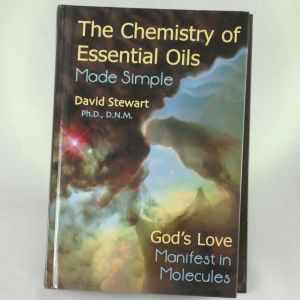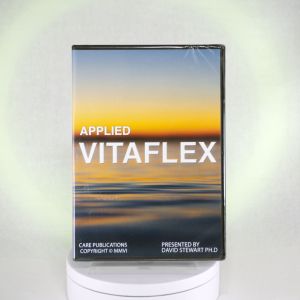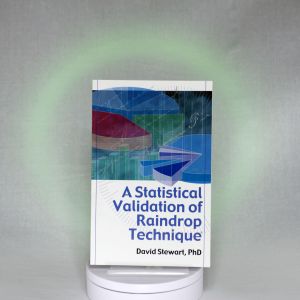This website uses cookies so that we can provide you with the best user experience possible. Cookie information is stored in your browser and performs functions such as recognising you when you return to our website and helping our team to understand which sections of the website you find most interesting and useful.
Answering the White Paper on Raindrop – Volume 5, Number 6
Please feel free to share this newsletter!


Raindrop Messenger
Official Newsletter of CARE
The Center for Aromatherapy Research and Education
12923 BCR 800, Marble Hill, Missouri USA 63764
(573) 238-4846
NOTE: The information in this newsletter is intended for education purposes only. It is not provided in order to diagnose, prescribe, or treat any disease, illness, or injured condition of the body or mind. Anyone suffering from any disease, illness, or injury should consult with a physician or other appropriate licensed health care professional.
Answering the White Paper on Raindrop
by David Stewart, PhD, DNM, IASP, BCRS, LSH
Originally Posted November – December 2007
1. Answering the White Paper on Raindrop
by David Stewart, PhD, DNM, IASP, BCRS, LSH
The so called “White Paper on Raindrop” is actually an anti-raindrop publication. It has been available on the internet since 2003 and is still running on the internet. People finding it without any foreknowledge or experience with raindrop are confused by it and discouraged from engaging in or receiving a raindrop. Young Living regularly gets inquiries about the possible dangers of raindrop as suggested by this paper. If anyone asked you about the “White Paper on Raindrop” and you want to have an informed answer, here it is.
The paper originated as a committee project of the National Association of Holistic Aromatherapists (NAHA). This organization is a British oriented group who believe that many essential oils (sold and used by Young Living distributors) are intrinsically dangerous and should not be used at all for any purpose. They don’t believe in oral ingestion of oils. They also don’t believe any oil (with few exceptions) should be applied neat to the skin, i.e. without dilution in a neutral massage oil. The typical British recommendation is to apply essential oils to the skin only when reduced to a 2-5% concentration in a fatty oil such as jojoba, almond, grape seed, olive, etc. (For more info, the NAHA and the British point of view is clarified and explained, along with its fallacies, in the book, The Chemistry of Essential Oils Made Simple, Chapter One.)
Based on this white paper, NAHA has ruled that the practice of raindrop technique is “unprofessional.” The basis for this ruling is that raindrop uses several of their forbidden oils, such as oregano and wintergreen, and that all or most of the oils applied in raindrop are applied neat, directly to the feet and back.
When the paper was first commissioned by NAHA, they set up a committee which originally included two women and Dr. David Stewart, who had asked to be included on the committee. Dr. Stewart was a member of NAHA at that time. However, when it was discovered that Dr. Stewart does raindrop and teaches raindrop, he was thrown off the committee because, in their words, “He knows about raindrop, teaches raindrop, and does raindrop. Therefore, he would be prejudiced and should not serve on the committee.”
Thus, the paper was written by only two authors, one of them a Registered Nurse. When quizzed as to their knowledge and experience with raindrop that would qualify them to write such a paper, it was discovered that neither of them had ever seen, experienced, or done a raindrop and neither of them had ever had any training in raindrop. Their main source of information on the technique, itself, was from the Essential Oils Desk Reference (whatever edition was available in 2002). When they were offered opportunities to actually receive a raindrop to experience first-hand its effects, they vehemently declined saying, “We would never submit ourselves to receive a raindrop because it is too dangerous.”
While the grounds for my disqualification to serve on the NAHA White Paper Committee was too much knowledge and experience with raindrop, the grounds for their qualifications to write the paper appears to have been their lack of knowledge and inexperience of raindrop. NAHA seems to believe that the best basis for objectivity in the pursuit of truth is ignorance.
To those unacquainted with raindrop technique, the White Paper may appear at first to rest on a valid basis by a superficial perusal of the bibliography of sources. Eventually, one realizes that nowhere among their many sources are any studies on raindrop, itself. No where do they cite any data from an actual raindrop. The paper is a review of scientific literature on specific properties of the oils used in raindrop, which are, for the most part, animal studies or studies of single compounds extracted from an oil. In no case does their bibliography include a study of a completely intact, therapeutic grade oil, applied to a human being. None of their conclusions are based upon the outcome of an actual raindrop session.
Furthermore, in noting that blue tansy (Tanacetum annum) is an ingredient in Valor, one of the basic blends applied in raindrop, they confused that species with Idaho tansy or wild tansy (Tanacetum vulgare), which has a completely different chemistry than blue tansy. When this error was pointed out to them in 2003 after the paper was published, they ignored my suggested correction and chose to retain this error in their paper.
One can pick their paper apart and expose many errors, but the only important point to remember is that this so called “White Paper” on raindrop contains no actual data on raindrop nor does it contain any information on the effects of therapeutic grade oils on people. While most of the sources they quote are legitimate scientific studies, they are not studies that relate to the safety and effectiveness of raindrop nor to the human application of therapeutic grade oils. They have used good science in an inappropriate, misleading, and fallacious way.
The ultimate rebuttal to the white paper is this: When Dr. Stewart was removed from the NAHA committed working up the paper, he realized that at that time there were no scientific studies on raindrop, itself. In late 2002 Dr. Stewart initiated a survey of raindrop practitioners and raindrop receivers to compile data for a statistical report on raindrop. He wanted all the information he could find from actual receivers and practitioners of raindrop, good and bad. It was to be an honest study.
Aromatherapists from NAHA and others from Great Britain had been circulating criticisms of raindrop via the internet for years, including on some aromatherapy email chat groups, of which Dr. Stewart was a participant. In order to be completely objective, Dr. Stewart solicited data from the NAHA and British sources who had been critical of raindrop asking them to submit actual data, including when and where the raindrop techniques had been performed and the problems encountered, that would support their accusations on the alleged dangers of raindrop. Some of these individuals had claimed that people had actually been sent to emergency rooms following a raindrop suffering anaphylactic shock and other injuries resulting from raindrop. Dr. Stewart asked them to send documentation of these claims so he could include them in his study.
The response of the NAHA people and British aroma was to boycott Dr. Stewart’s study. They circulated email messages to everyone they could saying, “Do not cooperate with Dr. Stewart’s raindrop study. Do not send him any data or information.” As a result, none of these people sent Dr. Stewart anything to confirm their claims for the alleged hazards of raindrop, even though he had sought their input and would have included their data. They also embarked on a campaign to discredit Dr. Stewart, alleging that he was a fraud, did not actually hold a Ph.D., and had never taught in a university as he claimed to have done. All of these were false claims.
It took more than nine months for Dr. Stewart to collect, compile, and complete the study. It contains information on more than 10,000 raindrop sessions. It documents the safety and efficacy of raindrop technique very thoroughly. None of the dangers alleged by the NAHA and British aromatherapists were uncovered by this study, which, if they had been real and true, would have been revealed and reported. The study is available as a 60-page book entitled “A Statistical Validation of Raindrop Technique,” available from www.RaindropTraining.com, Essential Science Publishing (ESP), Abundant Health, and other sources.
The “White Paper” continues to be posted on the internet and continues to be accepted by NAHA as the basis for their opposition to raindrop. Addressing and arguing with the details of the paper, itself does not answer the question of whether raindrop technique is a safe and effective procedure, since the white paper contains no raindrop data. The effectiveness and safety of raindrop is well addressed in the only study ever done on raindrop, to date, which is “A Statistical Validation of Raindrop Technique.”
In a few cases over the years British or NAHA aromatherapists have persuaded insurance companies covering raindrop practice to drop their coverage and in some cases have attempted to convince legislators to consider drafting bills to outlaw raindrop, based on the “White Paper.” When the insurance companies who had been persuaded by the “White Paper” to cease their coverage for raindrop were presented with a copy of “A Statistical Validation of Raindrop Technque,” in every instance, they immediately cast aside the white paper and reinitiated their raindrop coverage. In the case of legislators who had been misled by the White Paper proponents, upon reviewing a copy of A Stastical Validation of Raindrop, they dropped their considerations of a legislative ban on raindrop.
Rather than engaging in a debate over the merits (or demerits) of the so called “White Paper on Raindrop,” the best rebuttals to falsehoods are simple presentations of facts and truth. From that people can make up their own minds as to the merits of one point of view over another.
POST SCRIPT:
In case you were wondering about my credentials, DNM is Doctor of Natural Medicine, BCRS is Board Certified Raindrop Specialist, IASP is Integrated Aromatic Science Practitioner, and LSH is Licensed Spiritual Healer. My PhD is in geophysics which was preceded by a BS double major in math and physics. As for University teaching experience, I taught for seven years at the University of North Carolina, Chapel Hill, and headed up the MacCarthy Geophysics Labortatory (1971-1978). I also taught five years at Southeast Missouri State University, Cape Girardeau, and headed up the Center for Earthquake Studies (1988-1993). A more complete bio can be found in my books as well as on the www.RaindropTraining.com website.
Besides the “Statistical Validation of Raindrop,” my other aromatherapy books include “Healing Oils of the Bible” and “The Chemistry of Essential Oils Made Simple.” All of three of these are sold by CARE, ESP, Abundant Health, Sound Concepts, Amazon.com, and many bookstores, etc. Healing Oils of the Bible is now available in Europe in German as Heilende Ole der Bibel. I have also published five books on earthquakes and eight other books on health related issues regarding natural childbirth, midwifery, breastfeeding, nutrition in pregnancy, hospital obstetrics, and newborn care. Most of these books are available from Amazon.com and other sources and are available on the internet at www.carepublications.net.
~^~^~^~^~^~^~^~^~^~^~^~^~^~^~^~
2. Sexy Fragrances
by David Stewart, PhD, DNM, BCRS
A recent program on National Public Radio discussed a scientific study to determine which fragrances that are most sexually exciting for men and for women. For men, the top aprodesiac aromas were pumpkin pie, lavender, doughnuts, licorice (or anise), basil, and buttered popcorn. For women the top three were the smell of rain, dirt, and buttered popcorn. Only buttered popcorn was shared by both men and women.
The results for women were surprising. Who would figure that the earthy odors of rain and dirt would be women’s choices as sexually arousing? As for men, it can be understandable that lavender, which is a perfumy scent, might remind them of a woman, but pumpkin pie and dougnuts? Who would figure that?
It is interesting to note that in Eastern Canada there has been a recent fad among teenagers to use strange colognes and perfumes. Commercially available fragrances include “Laundromat,” “Cotton Candy,” “Sugar Cookie,” “Ginger ale,” and “Dirt.” I bought a bottle of “Dirt” when I was there last year and it smells exactly like fresh soil, which was not altogether unpleasant if you like the smell of the earth after a rain. So there you have it. Even the perfume industry is on to the dirt smell thing.
As for basil, licorice, and anise, it is the fragrance of two common compounds found in all three of these that dominates these tastes and fragrances: estragole (methyl chavicol) and anethole. Historically, young Greek and Italian girls used to wear sprigs of fresh basil around their necks in the belief that the fragrance would attract men. Now there is a scientific basis for that practice.
The scientists making the study said that the same smells would not necessary evoke the same responses. A fragrance pleasant to one person may be repulsive to another depending on their experiences and memories associated with it. They cited the example of a person who liked the odor of skunk because as a child she was engaged in a pleasant and unforgettable experience when she first smelled a skunk. The researchers also mentioned that the savory odor of pumpkin pie is associated with the holidays of Thanksgiving and Christmas, which may be times of relaxation when lovers and couples spend more time together, hence the association with sex.
Putting these newly discovered scientific facts to practical use, ladies, here’s what you can do to be pleasing to your man: apply the oils of lavender and basil, offer him a doughnut, and bake him a pumpkin pie. For couples, relax and pop some corn together. For men, I don’t know. Somehow I don’t see you coming in out of the rain with dirt on your trousers as something appealing to your woman, but you might give it a try.
~^~^~^~^~^~^~^~^~^~^~^~^~^
3. Gary Young’s Magic Relief Formula
by Nancy Sanderson (Gary’s Sister)
Here is Gary Young’s Magic Relief Recipe. It is from my notes:
MAGIC RELIEF FORMULA
Combine the following in the exact order in an amber-colored glass jar:
1 oz. V6 mixing oil
8 drops Spruce
8 drops Sandalwood
7 drops Fir
5 drops Hyssop
4 drops Lemongrass
5 drops Helichrysum
4 drops Birch (or Wintergreen)
2 drops German (blue) Chamomile
1 drop Blue Tansy
This will help explain the use of Magic Relief. Great for bone, joint discomfort and tissue regeneration.
Magic Relief has been used for many things. I made it for myself when I tore the muscles and ligaments in my shoulder and was told that my hip joints were wearing out. My Grandmother had hip replacement surgery and she said if you don’t have to go through that, don’t.
At night I could not lay on my sides as my hip would start aching and hurting clear down my leg. Since I made the Magic Relief I no longer have had problems sleeping on my sides at night and this has been eight years since I made this blend and started using it.
My shoulder had healed wrong because I didn’t go to a doctor until 6 months later. I could not lift my arm let alone carry anything. I now have full use of my arm and can carry any amount of heavy objects.
This blend has been used to:
– fill a hole in that had been eaten almost through by a virus in the of
bone of a finger when antibiotics wouldn’t work.
– Stiff neck problems, arthritic, along with Frankincense for cancer and
chemo side effects.
– To assist in a the transition of death, making the pass-over peaceful and easing the pain of cancer.
– When in doubt use it for anything, it is great!
——————
Disclaimer: These Statements have not been evaluated by the Food and Drug Administration. Products and/or techniques mentioned are not intended to diagnose, treat, cure or prevent any disease. The information provided here is for educational purposes only and is not intended as diagnosis, treatment, or prescription for any disease. The decision to use, or not to use, any of this information is the sole responsibility of the reader.
~^~^~^~^~^~^~^~^~^~^~^~^~^~^~^~^~
4. Making your Own Helichrysum
by David Stewart, PhD, DNM, BCRS
Helichrysum (Helichrysum italicum) is a powerful and versatile oil as a single. It is also used in many Young Living oil blends and products as follows: Aroma Life, Brain Power, Forgiveness, Awaken, JuvaFex, JuvaCleanse, Live With Passion, M-Grain, PanAway, Trauma Life, Chelex Tincture, ArthroTune, and CardiaCare. It is also an ingredient in Gary Young’s Magic Relief Formula, as mentioned in the recipe given in the article just above.
Unfortunately, Young Living’s European source for Helichrysum is no longer available. Hence helichrysm is no longer availalble as a single oil through Young Living.
Gary Young is planning to establish an annual helichrysum crop on his new farm in Ecuador. However, it may be a a year or more before the oil is in production in sufficient quantities to offer all distributors again. Helichrysum italicum also goes by the common names of “Everlasting” and “Immortele.”
Until Young Living can produce enough to sell again, you can make your own substitute from oils that are available. I have developed this formula based on a chemistry that approximates the compound composition of helichrysum. I call it “Helichrysum Blend.”
It is simple. Mix equal parts of the following six oils, all available from Young Living:
Clary Sage (Salvia schlarea)
Elemi (Canarium luzonicum)
Roman Chamomile (Chamaemelum nobile)
Wild Tansy (Tanacetum vulgare)
Wintergreen (Gaultheria procumbens)
Ylang Ylang (Cananga odorata)
You can use equal numbers of drops or equal numbers of any other measure you wish depending on the quantity of Helichrysum Blend you want make up.
The similarities of chemistries between Actual Helichrysum and Helichrysum Blend are as follows:
GENERAL CHEMISTRY OF HELICHRYSUM
(Helichrysum italicum)
Esters . . . . . .43%
Ketones. . . . . .20%
Sesquiterpenes . .15%
Monoterpenes . . .12%
Alcohols . . . . . 6%
Phenols. . . . . . 1%
Oxides . . . . . . 1%
Other Compounds. . 2%
GENERAL CHEMISTRY OF HELICHRYSUM BLEND
(Equal parts of Clary Sage, Elemi, Roman Chamomile, Wild Tansy, Wintergreen, and Ylang Ylang)
Esters . . . . . .41%
Ketones. . . . . .15%
Sesquiterpnes. . .14%
Monoterpenes . . .16%
Alcohols . . . . . 8%
Phenols. . . . . . 1%
Oxides . . . . . . 1%
Other Compounds. . 4%
The category, “Other Compounds,” includes minor amounts (less than 1%) of Aldehydes, Carboxylic Acids, Coumarins, and Ethers. For the definitions and properties of “Esters,” Ketones,” “Alcohols,” and other classes of compounds, see “The Chemistry of Essential Oils Made Simple,” available from http://www.RaindropTraining.com and many other sources.
Except for a slight minty tone from wintergreen and a floral tone from ylang ylang, the fragrance of Helichrysum Blend is very similar to the oil of the single species, Helichrusum italicum itself.
While the chemistry of none of these six individual oils are like that of Helichrysum, as a combination they come very close. For example, it has been suggested that Wild Tansy is a good substitute for Helichrysum, and in many ways it may be. But the dominant chemistry of Tansy is 77% ketones with only 5% esters while that of Helichrysum is only 20% ketones with 43% esters.
Another suggested substitute for real Helichrusum is a blend of Tansy, Elemi, and Wintergreen. While Wintergreen (like Helichrysum) is predominantly esters (97%), this is double the concentration of esters as found in Helichrysum italicum. Furthermore, wintergreen oil does not contain any of the remaining compounds of Helicrysum. As for Elemi, it is mainly monoterpenes (71%) and contains no esters or ketones while Helichrysum contains mostly esters and ketones and only 12% monoterpenes. even so, despite the major differences chemical between Helichrysum and any of these six oils separately, when these six oils are combined in equal proportions, the general chemical profile of Helichrysum is duplicated to a very close extent, as seen by the percent’s above.
Specifically, there are seven compounds found in Clary Sage that are also found in Helichrysum, except in different proportions. These are beta-caryophyllene, curcumene, 1,8 cineol, l-limonene, linolol, nerol, and neryl acetate. Beta-caryophyllene is also found in Ylang Ylang and Roman Chamomile. Linalol is also found in Ylang Ylang. And l-limonene, which has a pine-like fragrance, is also an ingredient of Elemi. Helichrysum and Ylang Ylang both contain eugenol, which is a local anesthetic and is the predominant compound of clove oil.
But all of this is academic concerning Helichrysum Blend as a substitute for real Helichrysum if it does not provide some of the same therapeutic benefits of real Helichrysum.
The extent to which the therapeutic action of Helichrysum Blend mimics that of actual Helichrysum italicum can only be determined by trial and experimentation. The formula developed above is based on matching the common chemistry, not an attempt to match any common effects. There are many potential benefits from this blend, but are the same benefits as Helichrysum italicum? And what additional benefits might there be? Those are the questions at this time. I am trying the blend myself at this time to observe its effects — physical, emotional, and otherwise. I will report my findings through this newsletter in about six months.
If you create some of this blend and try it yourself or on others, please let me know your observations and experiences of its results and I will report them, giving you credit. This will probably be in my July-August or Sept-October issue of the Raindrop Messenger.
One of the most dramatic therapeutic effects of actual Helichrysum is in the restoration of hearing loss in applying the oil with the vitaflex ear technique. Among other things I am going to experiment with the hearing restoration effects of this blend as compared to my past experiences with Helichrysum italicum. If you try the Helichrysum Blend with the ear vitaflex, please let me know what results are achieved. We want to know any results, positie or negative, and whether like those of actual helichrysum or otherwise.
NOTE: A training DVD is available that teaches Twelve Vitaflex Techniques, including the one for ears using helichrysum. It is called “Applied Vitaflex” (2 hours) and is available from CARE at http://www.RaindropTraining.com. This technique is also taught in all CARE Vitaflex Classes. These classes are also listed on the CARE Raindrop Training website.
THE RAINDROP MESSENGER
Official Newsletter of CARE
The Center for Aromatherapy Research and Education
12923 BCR 800, Marble Hill, Missouri USA 63764
(573) 238-4846
NOTE: The information in this newsletter is intended for education purposes only. It is not provided in order to diagnose, prescribe, or treat any disease, illness, or injured condition of the body or mind. Anyone suffering from any disease, illness, or injury should consult with a physician or other appropriate licensed health care professional.
The Care Calendar
Topics covered in the Raindrop Messenger:
- Advanced Bible Oils
- AFNOR
- Allergy Season
- Allopathy
- ALOES/SANDALWOOD
- Ancient secrets of essential oils
- Annual CCI Summit
- Anointing
- Aroma Life
- Aromatherapist
- Aromatherapy
- Aromatherapy Certification
- Arthritis
- Believer
- BIBLE OILS
- Biblical Oils
- Birch Oil
- Black Widow
- Body Systems
- cancer
- CARE Chemistry
- CARE Classes
- CARE INTENSIVES
- CARE Seminars
- CARE Summit 2024!
- CARE training
- Carvacrol
- CCI Certification
- CCI Summit 2024
- CEDARWOOD
- Center for Aromatherapy Research and Education
- Chakras
- Charging for Raindrop
- Chemistry
- Chemistry of Essential Oils
- Chemistry of Essential Oils Made Simple
- Chemotypes
- cleanses
- Clover
- Continuing Education Credit
- CYPRESS
- Dangers Of Prescription Drugs
- Detoxifiers
- Developing Gratitude
- DI GIZE
- DIAMOND
- Do All You Can
- Earthquakes
- Elderberry
- ELECTROMAGNETIC FIELD
- EM FIELD
- Emotional Release
- Energize
- ENZYMES
- Essential Oils
- ESSENTIAL OILS FOR INTUITIVE PURPOSES
- Essiac tea
- Exodus Supplement
- Feelings Kit
- Flu
- Focus
- Frankincense
- FREQUENCES
- GALBANUM
- Garlic
- Gary Young
- Ginger
- Goals
- god's love
- Gold
- Gold Frankincense Myrrh
- Grapefruit
- Growth
- Habits
- Harmonies Melodies & Symphonies with Essential Oils
- Heal Your Body
- Healing
- Healing Oils Of The Bible
- Helichrysum
- HERXING
- History of Anointing Oils
- Holy Anointing Oil
- Holy Incense
- Homeopathy
- Homeostatic Intelligence
- HYSSOP
- IASP
- Institute for Energy Wellness Studies
- Integrated Aromatic Science Practitioner
- Joy
- laughter
- Lavender
- Learn Raindrop
- Lee Stewart
- Legal
- lemongrass
- linen
- Liver
- Look Ahead.
- Love
- Lyme Disease
- Mind-Body Connection
- Mint
- Myrrh
- NAT
- Natural
- Natural Molecules
- Neuro-Auricular Technique
- never give up
- new age
- Ningxia
- Ningxia Red
- Non-Nutritive
- Nova Vita
- Ocotea Oil
- Oils of ancient scripture
- Onycha
- ORAC SCALE
- Oregano
- Oregano oil
- Overcoming Diabetes
- patchouly
- Peruvian Chocolate
- Pest Control
- pheromones
- phosphoric acid
- Photoxicity
- POO-ROMATHERAPY
- Practitioner
- Preparation
- Protocel
- Pure Therapeutic Grade Essential Oil
- Quantum Physics
- Raindrop
- Raindrop certification
- Raindrop Classes
- Raindrop instructors
- Raindrop teachers
- Raindrop Technique
- Raindrop Technique Training
- Raindrop Training
- Raindrop Without a License
- RC Blend
- ringing in the ears
- Rose Essential Oil
- ROSE OF SHARON/CISTUS
- Rose Oil
- Safe Insect Repellants
- scar-b-gone
- Science Of Essential Oils Made Simple
- Sensitivities to Essential Oils
- sick building syndrome
- SPIKENARD
- Stay Positive
- staying healthy
- Success
- Supervisor Training
- Synthetic Compounds
- tansy
- Tea Tree
- The Blood Brain Barrier
- the Ecuador Clinic
- THE FIRST IMPRESSION TECHNIQUE
- the Mind-Body Connection
- THE PRAYER OF JABEZ
- The Quantum Connection
- THE SLEEP TECHNIQUE
- Therapeutic Grade
- Thieves Household Cleaner
- Thieves Oil
- Thyme
- Thyme Oil
- Tinnitus
- Tonya Peterson
- Transformation
- Transformation Oil Blend
- Twelve Questions to Ask Those Who Invite You to Join Another Company
- unresolved emotions
- valor blend
- Vitaflex
- water
- Wealth and Spirituality
- Wintergreen
- Wolfberries
- Ylang Ylang
- YLEO
- Young Living business
- Young Living Essential Oils
- Young Living Oils and Products
Shop this issue of the Raindrop Messenger
Read more issues of the Raindrop Messenger
In each issue of The Raindrop Messenger you will find articles and essays on a variety of topics related to health and longevity. Our hope is to be informative and, perhaps, inspiring to you for the benefit of your physical, mental, social, emotional, and spiritual life. The Raindrop Messenger is also a friendly way of keeping you abreast of CARE’s ongoing programs, activities and helpful books and videos.
The articles published in The Raindrop Messenger and in this archive are not copyrighted. You are encouraged to copy them, reprint them, and share them with friends. We would appreciate acknowledgment of their source by a statement to the effect.
By submitting this form, you are consenting to receive marketing emails from: The Center for Aromatherapy Research and Education. You can revoke your consent to receive emails at any time by using the SafeUnsubscribe® link, found at the bottom of every email. Emails are serviced by Constant Contact
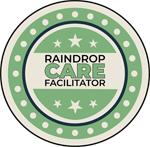
I JUST WANT A RAINDROP!
Have a facilitator contact you!
The Center for Aromatherapy Research and Education, Inc. (CARE) and it's Certified Instructors have trained hundreds of Facilitators in the Raindrop Technique. Click here to get started.
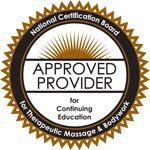
Center for Aromatherapy Research and Education is approved by the National Certification Board for Therapeutic Massage and Bodywork (NCBTMB) as a continuing education Approved Provider.
CARE International Inc
12923 BCR 800
Marble Hill, MO 63764
Toll Free (800) 758-8629
Fax (573) 755-0365
Open 9:00 AM to 4:30 PM CST
Monday - Friday
